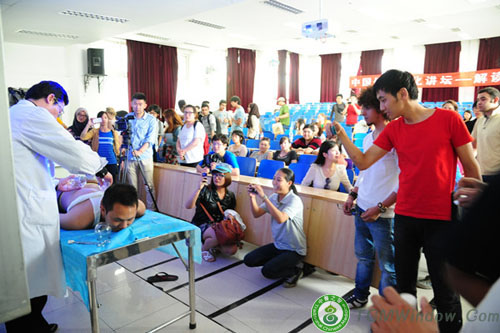
When it's the school holiday every year, we're always busy with foreign students who come to learn traditional Chinese culture.
Before the initial appointment, clients usually complete a health history questionnaire. The acupuncturist then interviews the client, asking about his or her primary health concern, lifestyle habits, diet, emotions, menstrual cycle, sleep, temperature, appetite, stress, and sensitivity to foods, temperature, and seasons. During the interview, the acupuncturist examines the client carefully, noting his or her face color, voice, and tongue colour and coating. There are also three pulse points at the wrist of each hand that the acupuncturist will assess to further determine the health of the 12 meridians.
After the interview, the acupuncturist gives a diagnosis and begins treatment. Typically, the acupuncturist will use 6-12 needles during the treatment. The number of needles used does not correspond with the intensity of the treatment, rather it is the precise placement of the needles that is important. Upon insertion, the client may feel a slight sting or prick. Once the needle is inserted, there should be no pain. You should feel comfortable during the treatment. If you experience pain, numbness, or discomfort, notify the acupuncturist immediately.
Treatment length varies from seconds to longer than one hour. The typical length is about 20 to 30 minutes. The acupuncturist may use the following techniques during the treatment:
1) Moxibustion: heating of acupuncture needles with dried herb sticks to activate and warm the acupuncture point. Also known as "moxa".
2) Cupping: the application of glass cups to create a suction on the skin. This is to relieve stagnation of qi and blood, e.g. in sports injury.
3) Herbal medicine: Chinese herbs may be given in the form of teas, pills, and capsules to supplement acupuncture treatment.
4) Electrostimulation: provides electrical stimulation to two to four acupuncture needles. Can be used for pain relief and muscle pain.
5) Laser acupuncture: non-needle stimulation of needles

![Diseases, Symptoms, tcm, [tcmwindow.com]](/uploadFile/adImg/2015/4/24/6de633b8-0a7a-4546-868a-02389edf5c65.png)





